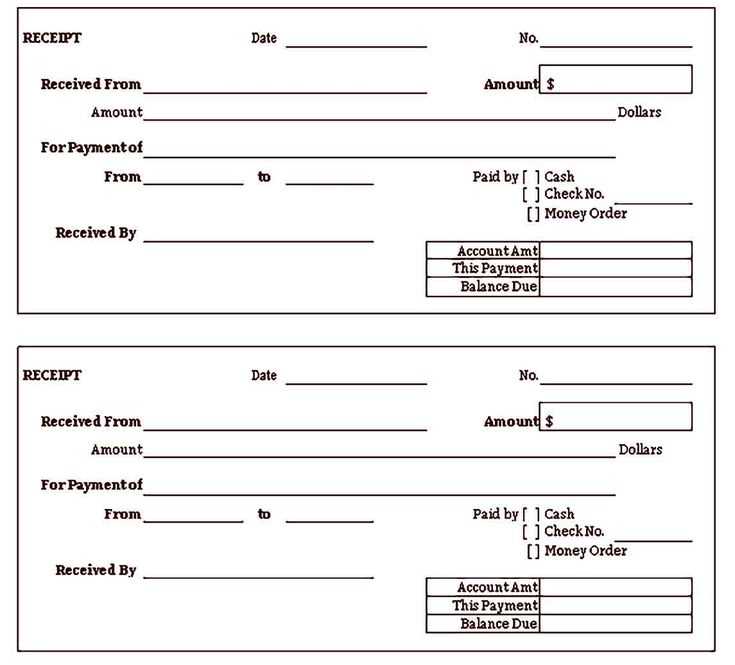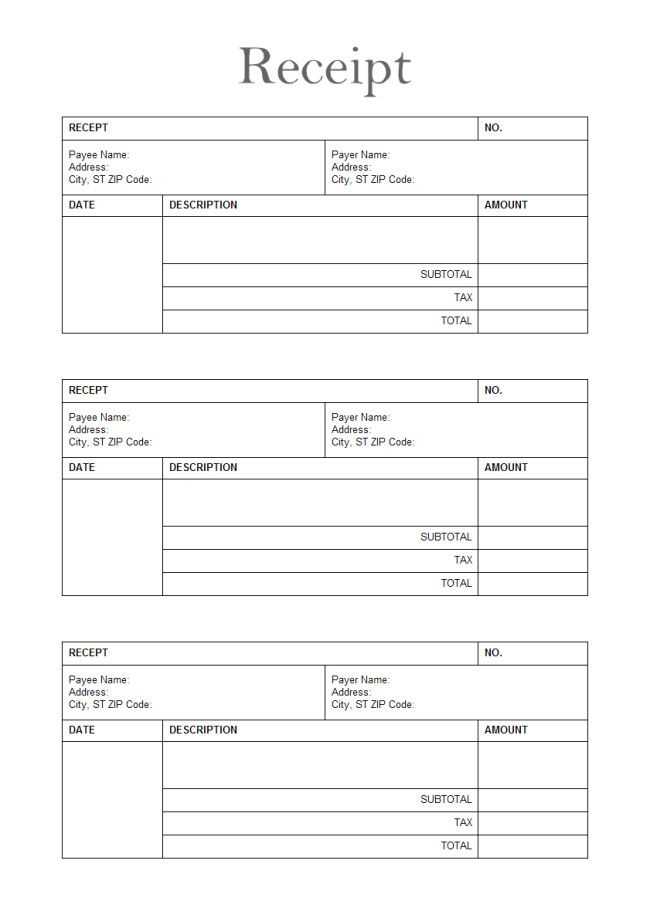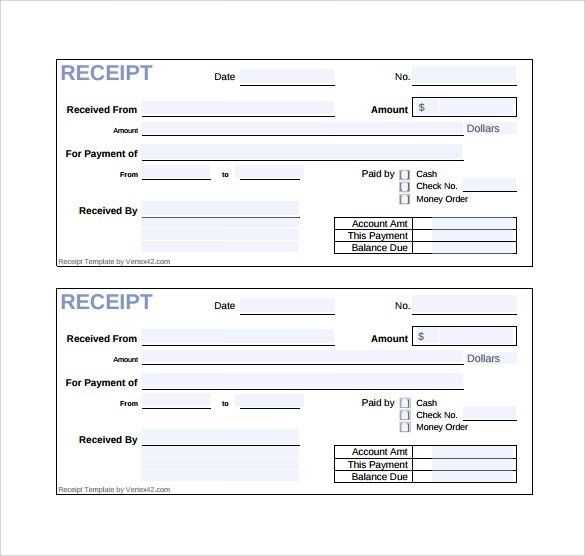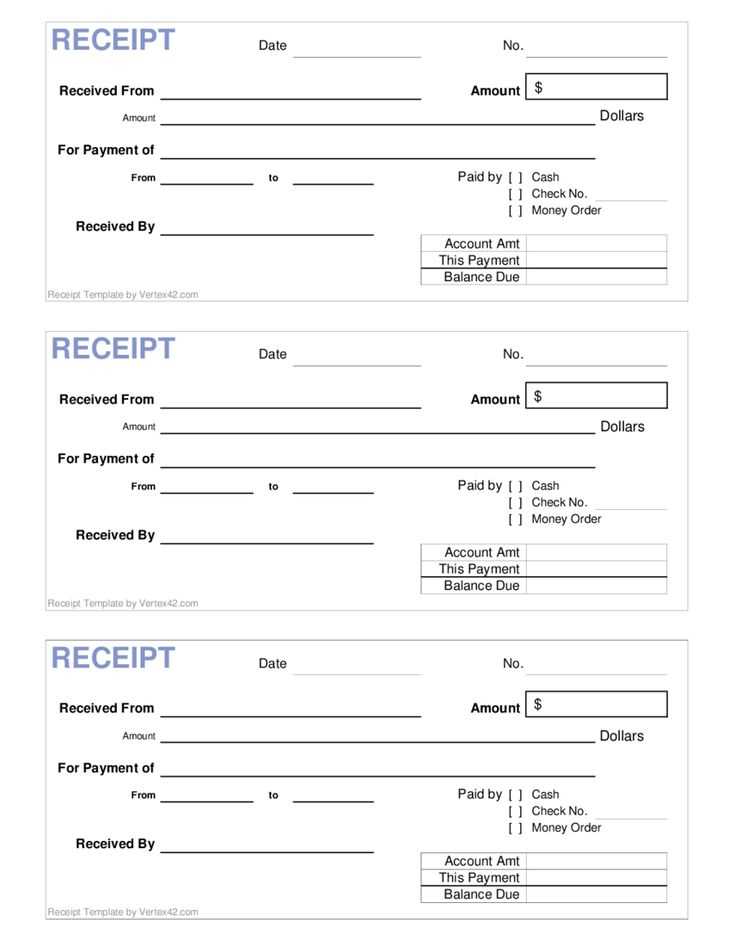
How to Create a Till Receipt Template
For a clear, functional till receipt, begin by including the following key sections:
- Store Information: Name, address, and contact details should be at the top.
- Receipt Number: A unique identifier for easy reference.
- Date and Time: Add a timestamp for the transaction.
- Itemized List: Each product or service purchased, quantity, price, and subtotal.
- Total Amount: Clearly display the total, including tax if applicable.
- Payment Method: Specify whether the payment was made by cash, card, or other methods.
- Return Policy: A brief note about return or exchange terms, if relevant.
- Thank You Message: A friendly closing, such as “Thank you for your purchase!”
Example Template Structure
Here’s a simple layout you can use:
Store Name Store Address Phone Number | Website URL Receipt Number: 12345 Date: MM/DD/YYYY Time: HH:MM Item Qty Price Total ----------------------------------- Item A 2 $10.00 $20.00 Item B 1 $15.00 $15.00 ----------------------------------- Subtotal: $35.00 Tax: $3.50 Total: $38.50 Payment: Credit Card Return Policy: 30-day return window with receipt. Thank you for shopping with us!
Tips for Customization
Consider these additional tips for a more personalized receipt template:
- Branding: Add your logo and use brand colors for a cohesive look.
- Digital Integration: Include a QR code for customers to access your website or feedback form.
- Discounts: If applicable, display any discounts or promotions applied to the purchase.
Keep your template simple but informative, ensuring all necessary details are clearly presented. Tailor it to your specific business needs for the best customer experience.
Till Receipt Template Guide
How to Create a Custom Receipt Template
Understanding Key Elements of a Till Receipt
Design Tips for a Clear and Professional Receipt
Common Mistakes to Avoid When Designing Receipts
How to Incorporate Discounts and Taxes into Your Receipt
Printing and Formatting Options for Templates

Designing a till receipt template begins with clarity. Keep key information easy to find: store details, transaction data, and itemized costs should stand out. Focus on the most important elements: store name, address, date, item names, prices, totals, taxes, and payment method. Consistency across receipts helps customers understand the details quickly.
How to Create a Custom Receipt Template
Start with a basic structure, including sections for store information, transaction details, and footer notes. Use clear fonts and a well-organized layout. Decide if your receipt needs to include promotions, loyalty points, or other variables that change per transaction. Utilize templates that allow for easy updates to account for changes in product offerings or business policies.
Understanding Key Elements of a Till Receipt

The key components of a till receipt are:
- Store Information: This includes the business name, contact details, and physical address.
- Transaction Date and Time: Always include the date and time of the purchase to avoid confusion.
- Itemized List of Products or Services: Include each item, its price, and quantity.
- Taxes and Discounts: Clearly display taxes applied and any discounts offered.
- Total Amount Paid: The final figure after taxes and discounts.
- Payment Method: This can include cash, credit card, or mobile payments.
Ensure that each element is properly spaced and aligned for easy reading.
Design Tips for a Clear and Professional Receipt
When designing your receipt, prioritize readability. Use a font size large enough for comfortable reading, but not too large to take up unnecessary space. Avoid overcrowding by limiting the amount of information on the receipt. Group similar data together (like item names and prices) for faster comprehension. Keep the design clean by using simple lines and dividers to separate sections.
Ensure your logo is visible but not overpowering. Customers need to see it, but the receipt is primarily for transactional information.
Common Mistakes to Avoid When Designing Receipts
Avoid cluttering the receipt with unnecessary details. Excessive graphics or lengthy disclaimers can distract from the important information. Do not use fonts that are difficult to read or too small to see clearly. Stay consistent in your layout to make it easy for customers to navigate the receipt each time they shop.
How to Incorporate Discounts and Taxes into Your Receipt

For discounts, show the discount amount and specify whether it’s a percentage or a fixed value. Always show how the discount affects the total price clearly. When adding taxes, list the tax rate applied and calculate the total tax amount separately from the item prices. This keeps the transaction transparent for the customer.
Printing and Formatting Options for Templates
Consider the format of your receipt when printing it. Thermal printers are commonly used for their quick and clear results. Ensure that your template is compatible with the paper size, typically 80mm or 3 inches wide, which is standard in many retail settings. Testing your template frequently is key to avoiding printing issues such as misalignment or cutting off text.


